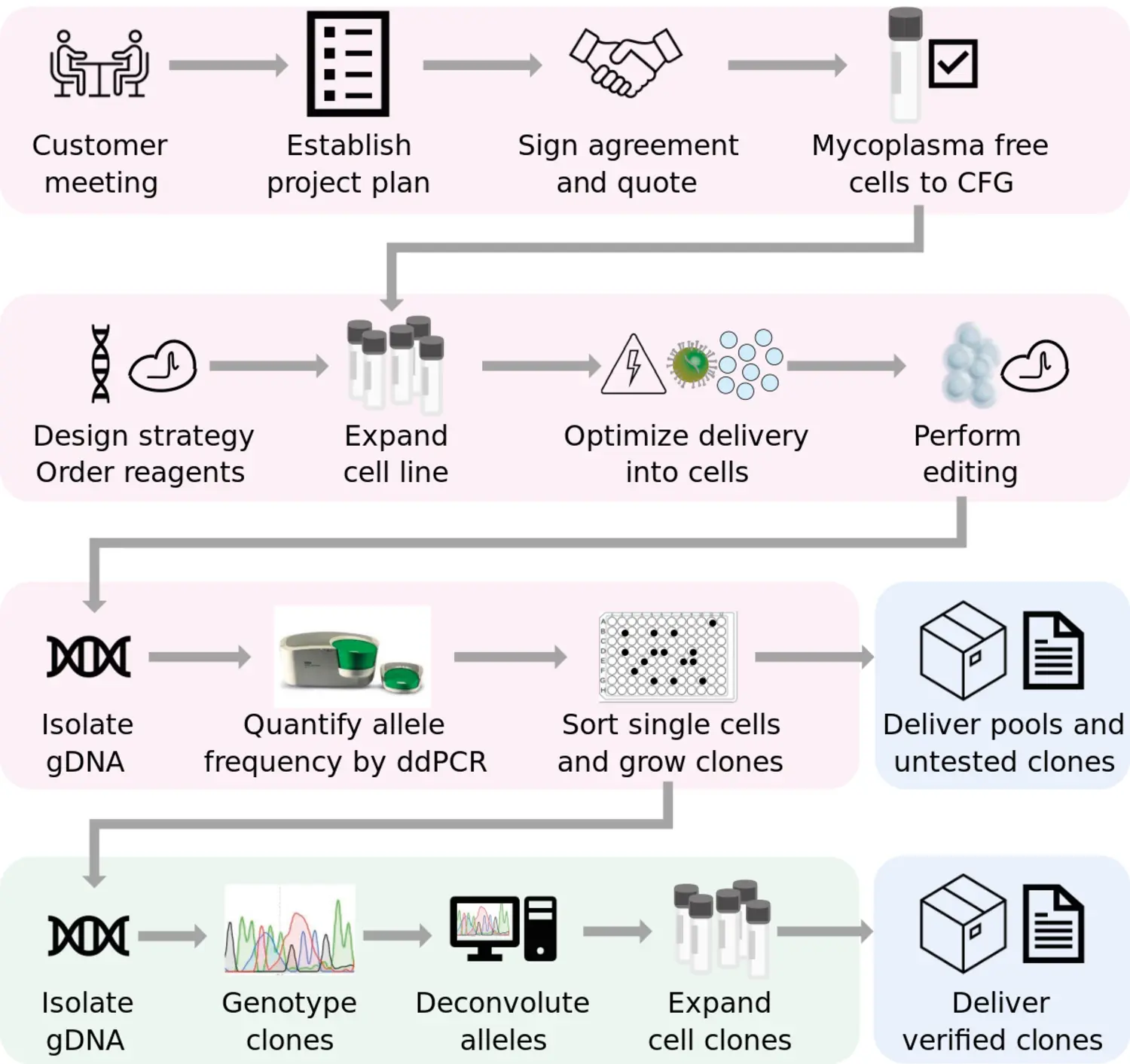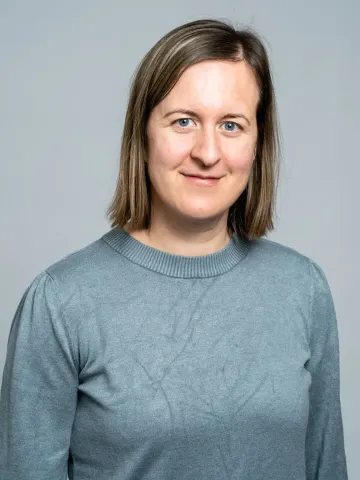CFG - Precision Editing
CRISPR Functional Genomics (CFG) is a SciLifeLab national infrastructure that provides flexible and affordable gene-editing services in cell lines and transgenic mouse lines. Our precision editing branch offers specific knock-outs and knock-ins in your cell type of choice. We can introduce point mutations, or insert smaller or larger DNA fragments. From strategy design to either an edited cell pool or genotyped clones.
Karolinska Genome Engineering Facility (KGE) is now part of CRISPR Functional Genomics.
Service Area Precision Genome Engineering
Precision genome engineering refers to the defined and precise modification of a genomic locus. CFG performs such modifications in cell lines, primary cells and ESCs, and designs CRISPR reagents for the creation of genetically modified mice. Application examples are the creation of disease-representative model systems, of reporter cell lines for high-throughput screens or other applications, the validation of hits from such screens, creation of isogenic cell lines, and many more. CFG has a rich toolbox for creating knock-outs, knock-ins, small mutations, or large deletions, including HDR-based editing, base-editing and prime-editing.
Our workflow
See below how the workflow of a typical project is. We can either deliver edited cell pools, sorted clones for the customer to genotype or, if our capacity allows, we can perform the genotying at an addition cost.

Strategy design
We determine the optimal guide sequences and recombination templates (dsDNA, ssDNA, ssODN). We then custom design a genome engineering strategy for each project, with an emphasis on facilitating downstream screening for correctly edited cell clones.
Optimization of delivery method and delivery into target cells
With input from the client, we determine the best way of delivery of the editing components into cells. We most commonly use electroporation (Neon Transfection System, ThermoFisher Scientific), however also perform lentiviral delivery (full support for all lentiviral work in collaboration with the VirusTech core facility).
Quantifications by droplet digital PCR
Quantification of the editing frequency in a cell pool is an important step in the process, and currently requires dedicated instrumentation. We use BioRad’s QX200 droplet digital PCR (ddPCR) system to directly quantify the frequency of edited alleles in a population of cells. The assay informs on whether editing efficiency is sufficient to proceed to clone growing. The customer then obtains a pool of edited cells with known editing efficiency, as well as single cells sorted into 96-well plates for clone growing and genotyping.
ddPCR responsible

Anneke Navis
Research Infrastructure Specialist - Precision EditingQuestions regarding our ddPCR system can be addressed to Anneke (Anna) Navis.
In general, our system is available for researchers to use after an introduction. We do charge a user fee.
Clone growing and genotyping
Clones can be either grown and genotyped by the customer, with advice from CFG (protocols, primer design, and bioinformatic analysis of sequencing results). Contingent upon available capacity, CFG can take over clone growing and genotyping.
Genetically modified mice
CFG has a long-standing collaboration with the Karolinska Center for Transgene Technologies (KCTT). CFG’s CRISPR expertise combined with KCTT’s mouse expertise provides a seamless service pipeline from CRISPR strategy design to transgenic animals. CFG provides strategy and reagents, and KCTT injects mouse zygotes with the designed CRISPR/Cas components and repair templates for one-step creation of genetically modified mice.
